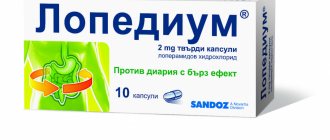Rocaltrol
Since calcitriol has a narrow therapeutic range, blood concentrations of Ca2+, phosphates, creatinine, urea nitrogen, and alkaline phosphatase activity should be determined first once a week, then periodically throughout the entire period of taking the drug in therapeutic doses. The Ca2+/creatinine index is recommended to be determined every 1-3 months until the patient’s condition is stabilized. The Ca2+ concentration should not exceed 8.8-10.3 mg/100 ml. The product of Ca2+ concentration and phosphate concentration (Ca x P) should not exceed 60 mg/dl.
A daily dose of 5 mcg or higher should be prescribed with great caution (clinical examination, as well as determination of the concentration of Ca2+, phosphates and alkaline phosphatase activity in the blood should be carried out 2 times a week).
Every 3-6 months (more often in case of familial hypophosphatemia, hypoparathyroidism), an X-ray examination of the skeletal system should be performed.
Due to the short T1/2, overdose symptoms can be corrected more easily than when taking vitamin D analogues with a longer T1/2.
In renal osteodystrophy with hyperphosphatemia, there is a high risk of metastatic calcification, so vitamin D is prescribed only when the concentration of phosphates in the blood is normalized.
It should be borne in mind that sensitivity to vitamin D varies from patient to patient, and even therapeutic doses can cause hypervitaminosis.
To prevent hypovitaminosis D, a balanced diet is most preferable.
Breastfed newborns, especially those of mothers with dark skin and/or insufficient sun exposure, are at high risk of vitamin D deficiency. Newborns' sensitivity to vitamin D varies, and some may be sensitive to even very low doses. Children who receive vitamin D over a long period of time have an increased risk of stunted growth.
Animal experiments have shown that calcitriol in doses 4-15 times higher than recommended doses for humans has a teratogenic effect. Maternal hypercalcemia (associated with prolonged overdose of vitamin D during pregnancy) can cause increased sensitivity to vitamin D in the fetus, suppression of parathyroid function, specific elf-like appearance syndrome, mental retardation, and aortic stenosis.
In old age, the need for vitamin D may increase due to a decrease in the absorption of vitamin D, a decrease in the skin's ability to synthesize provitamin D3, a decrease in sun exposure, and an increase in the incidence of renal failure.
Rocaltrol®
Mechanism of action
Calcitriol is one of the most important active metabolites of vitamin D3, stimulating calcium transport in the intestine.
The biological effects of calcitriol occur through interaction with the vitamin D receptor, a hormonal receptor located in the nucleus of most cell types. This receptor functions as a ligand-activated transcription factor that, by binding to a specific DNA sequence, controls the transcription of the corresponding genes.
It has been established that the action of calcitriol is realized in the bones and intestines.
Also, the calcitriol receptor binding protein appears to be located in the intestinal mucosa. In addition, calcitriol is thought to affect the kidneys and parathyroid glands. In rats with acute uremia, calcitriol stimulated intestinal calcium absorption.
The kidneys of patients suffering from uremia are unable to adequately synthesize calcitriol (the active hormone) from its precursor, vitamin D, resulting in hypocalcemia and secondary hyperparathyroidism. This is the main cause of metabolic bone disorders. The accumulation of various substances toxic to bones (for example, aluminum) during uremia can also contribute to the development of hypocalcemia and secondary hyperparathyroidism.
The therapeutic effect of the drug Rocaltrol® in renal osteodystrophy is ensured by the correction of hypocalcemia and secondary hyperparathyroidism.
It is not known whether Rocaltrol® has any other independent beneficial effects.
Clinical efficacy data
Calcitriol synthesis occurs in the kidneys from the precursor 25-hydroxycolecalciferol.
Normally, the human body produces 0.5-1 mcg of calcitriol per day; Calcitriol production increases during conditions of increased bone development (growth period or pregnancy). Calcitriol promotes calcium absorption in the intestine and regulates bone mineralization.
The pharmacological effect of a single dose of calcitriol lasts 3-5 days.
The key role of calcitriol in the regulation of calcium metabolism, consisting in stimulating the activity of skeletal osteoblasts, represents a reliable pharmacological basis for its therapeutic effect in osteoporosis.
In patients with severe renal failure, the synthesis of endogenous calcitriol is reduced or may even stop altogether. Calcitriol deficiency plays a major role in the occurrence of renal osteodystrophy.
In patients with renal osteodystrophy, the drug Rocaltrol® (synthetic calcitriol), when taken orally, normalizes reduced absorption of calcium in the intestine, eliminates hypocalcemia, increased activity of alkaline phosphatase and serum concentration of parathyroid hormone. It reduces pain in bones and muscles, and also eliminates the histological changes that occur with osteitis fibrosa and other mineralization disorders.
In patients with postoperative and idiopathic hypoparathyroidism and pseudohypoparathyroidism, Rocaltrol® reduces hypocalcemia and its clinical manifestations.
In patients with vitamin D-dependent rickets, serum calcitriol concentrations are low or completely absent. Given the insufficient endogenous synthesis of calcitriol in the kidneys, taking Rocaltrol® can be considered in such patients as replacement therapy.
In patients with vitamin D-resistant rickets and hypophosphatemia with low plasma calcitriol concentrations, treatment with Rocaltrol® reduces tubular excretion of phosphate and, in combination with phosphorus supplements, normalizes bone development.
Treatment with Rocaltrol® also helps with other forms of rickets, for example those caused by neonatal hepatitis, biliary atresia, cystinosis, as well as nutritional deficiency of calcium and vitamin D.
Preclinical safety data
Adverse effects when taking calcitriol at a dose of 20 ng/kg/day orally (2 times the human dose) for ≤6 months in animals are minor or absent. The use of a dose of 80 ng/kg/day (8 times the dose used in humans) for 6 months causes adverse events of moderate severity. The main reason for the observed changes is presumably long-term hypercalcemia.
Effect on fertility
At doses up to 300 ng/kg/day orally (30 times the dose used in humans), no effect on reproductive function was detected in rats. Multiple anomalies of fetal development were observed in rabbits in two offspring when the mother received a toxic dose of 300 ng/kg/day and in one offspring when using a dose of 80 ng/kg/day, however, these disorders were not observed when using a dose of 20 ng/kg/day. days (2-fold excess of the dose used in humans). Although there was no statistically significant difference between the treatment and control groups in the number of offspring or the number of fetuses with developmental anomalies, the role of calcitriol in their development cannot be excluded.
Rocaltrol capsules 0.25 µg bottle N30x1 R.P.Scherer GmbH
Standard dosage regimen. Inside. The initial daily dose is 0.25 mcg. The optimal daily dose of Rocaltrol must be carefully selected for each patient depending on the calcium content in the serum. Treatment with Rocaltrol should always be started with the lowest possible dose and increased only with careful monitoring of serum calcium levels. A necessary condition for optimal effectiveness of Rocaltrol therapy is a sufficient, but not excessive intake of calcium from food from the beginning of treatment (for adults - about 800 mg per day). In some cases, the patient may need to take calcium supplements. Due to improved calcium absorption in the gastrointestinal tract, a reduced calcium intake may be sufficient for some patients receiving Rocaltrol. Patients with a tendency to hypercalcemia should be prescribed drugs only in small doses or even discontinue them. Total daily calcium intake (from food and, if applicable, from medications) should average approximately 800 mg and not exceed 1000 mg. During the stabilization phase of Rocaltrol therapy, serum calcium concentrations should be determined at least twice a week. After selecting the optimal dose of Rocaltrol, serum calcium levels should be checked monthly (or as recommended for individual indications, see below). Blood for calcium determination should be taken without using a tourniquet. As soon as the serum calcium level exceeds the normal range by 1 mg/100 ml (250 µmol/L) (9-11 mg/100 ml or 2250-2750 µmol/L) or serum creatinine exceeds 120 µmol/L, Rocaltrol should be discontinued immediately until normalization of calcium levels in the blood. In hypercalcemia, serum calcium and phosphate levels should be determined daily. After their normalization, treatment with Rocaltrol can be continued, reducing the previous dose by 0.25 mcg. Daily dietary calcium intake should be assessed and dietary adjustments made if necessary. Dosing in special cases in adults. Postmenopausal osteoporosis: 0.25 mcg 2 times a day. Calcium and creatinine levels should be determined 4 weeks, 3 and 6 months after the start of treatment, and then every 6 months. Renal osteodystrophy (patients on dialysis): initial daily dose - 0.25 mcg. For patients with normal or only slightly reduced serum calcium levels, a dose of 0.25 mcg every other day is sufficient. If biochemical parameters and the clinical picture do not improve, the daily dose should be increased by 0.25 mcg at intervals of 2-4 weeks. During this period, serum calcium should be determined at least twice a week. In most patients, the therapeutic effect occurs at a daily dose of 0.5-1.0 mcg. In patients refractory to continuous therapy, pulse (intermittent) therapy with Rocaltrol at an initial dose of 0.1 mcg/kg 2-3 times a week at night is effective. The maximum total dose of Rocaltrol should not exceed 12 mcg per week. Secondary hyperparathyroidism (pre-dialysis): In patients with moderate to severe renal impairment (creatinine clearance 15-55 ml/min), the initial daily dose is 0.25 mcg per day for adults and children over 3 years of age (adjusted for a surface area of 1.73 m2). The daily dose can be increased to 0.5 mcg. Hypoparathyroidism and rickets: initial dose - 0.25 mcg per day in the morning. If no improvement in biochemical parameters and clinical picture is observed, the dose can be increased at intervals of 2-4 weeks. During this period, serum calcium should be determined at least twice a week. In case of hypercalcemia, Rocaltrol should be stopped immediately until the calcium level in the blood normalizes. Calcium intake from food should be reduced. Patients with hypoparathyroidism may sometimes experience impaired absorption, including calcium, which may require an increase in the dose of Rocaltrol. If Rocaltrol is prescribed to a pregnant woman with hypoparathyroidism, then in the second half of pregnancy it may be necessary to increase the dose of the drug, and after childbirth and during breastfeeding - to reduce it. Dosing in elderly patients. Elderly patients do not require dose adjustment. General recommendations for monitoring serum calcium and creatinine levels should be followed.


